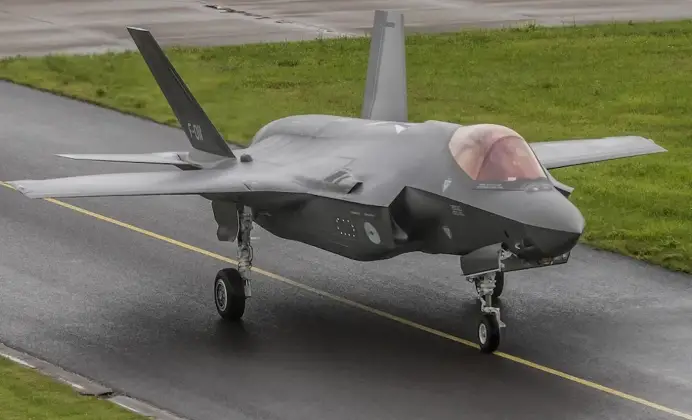<p >The Royal Netherlands Air Force has become the second it the world to field a fighter fleet fully comprised of fifth generation aircraft, after it phased its last fourth generation F-16s out of service on September 26. The country previously fielded the&nbsp; F-16AM/BM Block 15, which were some of the oldest F-16s stilly flying anywhere in the world and were supplied by the United States in the early 1980s. The F-16s have been fully replaced by the F-35, which is currently the only class of fifth generation fighter in production in the Western world. Commenting on the F-35’s full taking over of the F-16’s role, the Air Force announced: “Whether it is surveillance of the [Belgium, Netherlands, Luxembourg] Benelux airspace, carrying out operations to contain terrorism, for example, or to contribute to NATO's nuclear deterrent, the F-35 can do it all. As of today, this type of fighter aircraft is officially fully operational under all circumstances. In jargon, it has full operational capability status.”&nbsp;&nbsp;</p><p ><img src=" title="Royal Netherlands Air Force F-16"></p><p >The Royal Norwegian Air Force in January 2022 became the first service in the world to convert its fighter fleet&nbsp;<a href=" to operating</a>&nbsp;fifth generation aircraft,&nbsp;when it similarly replaced early production variants of the F-16 with new F-35As. Both Norway and the Netherlands were partners in the F-35 program, and <a href=" target="_blank">paid considerably more</a> for the aircraft than more recent clients, but also received significant benefits from technology sharing and industrial participation. The F-35 has since received large orders from across Europe consistently&nbsp;<a href=" tenders</a>&nbsp;against ‘4+ generation’ fighters such as the Eurofighter produced on the continent.&nbsp;The fighter provides significant performance advantages over the F-16 including stealth capabilities, far more advanced sensors and avionics and access to a new generation of armaments.&nbsp;</p><p >In the Netherlands, F-35s are notably also responsible for nuclear delivery missions alongside their conventional roles, with the country retaining access to American B61-12 nuclear bombs under nuclear sharing agreements. F-35s under 313 Squadron <a href=" took over</a> the country’s nuclear attack role as of June 1, 2024, after F-16s had for decades previously fulfilled this role. This made the country the first in Europe, and possibly the first outside the United States, to field a stealth fighter unit capable of launching nuclear attacks, with the U.S. Air Force’s F-35s themselves having only been&nbsp;<a href=" to have obtained</a>&nbsp;a nuclear strike capability on March 9.&nbsp;</p><p ><img src=" title="F-35 Drops Mock B61 Nuclear Bomb"></p><p >Fifty-two F-35s are currently on order for the Royal Netherlands Air Force, of which 40 have already been delivered. The country is currently planning to order a further six fighters, allowing it to add two F-35s to each of its three planned squadrons. Two squadrons are currently operational including 322 Squadron based at Leeuwarden Air Base and 313 Squadron based at Volkel Air Base. Despite its benefits, conversion to a fleet entirely comprised of F-35s has proven to also have significant drawbacks, as demonstrated by the Royal Norwegian Air Force’s experience doing so. After facing early issues with the fighters, including the revelation that the aircraft were collecting sensitive data on Norwegian pilots and<a href=" >&nbsp;sending it back</a>&nbsp;to the United States, Norway has continued to struggle to operate its F-35s, with shortages of personnel for maintenance having been a major issue for the notoriously maintenance intensive aircraft. Norwegian Defence Minister Bjorn Arild Gram in May informed local media that the country faced the risk of “a situation where the planes are left on the ground due to a lack of technical personnel,” leading the Air Force to look to hire technical personnel from abroad. Although it has a high combat potential, the F-35 has been plagued with issues including very low all weather availability rates, which stand at&nbsp;<a href=" >close to 30 percent&nbsp;</a>in the U.S. Air Force, as well several hundred&nbsp;<a href=" >performance defects</a>. It remains uncertain to what extent these issues will undermine the Royal Netherlands Air Force’s combat potential.&nbsp;</p>
Netherlands Becomes Second Country With a Fully Fifth Generation Fighter Fleet: What it Means For the Future of its Air Power

